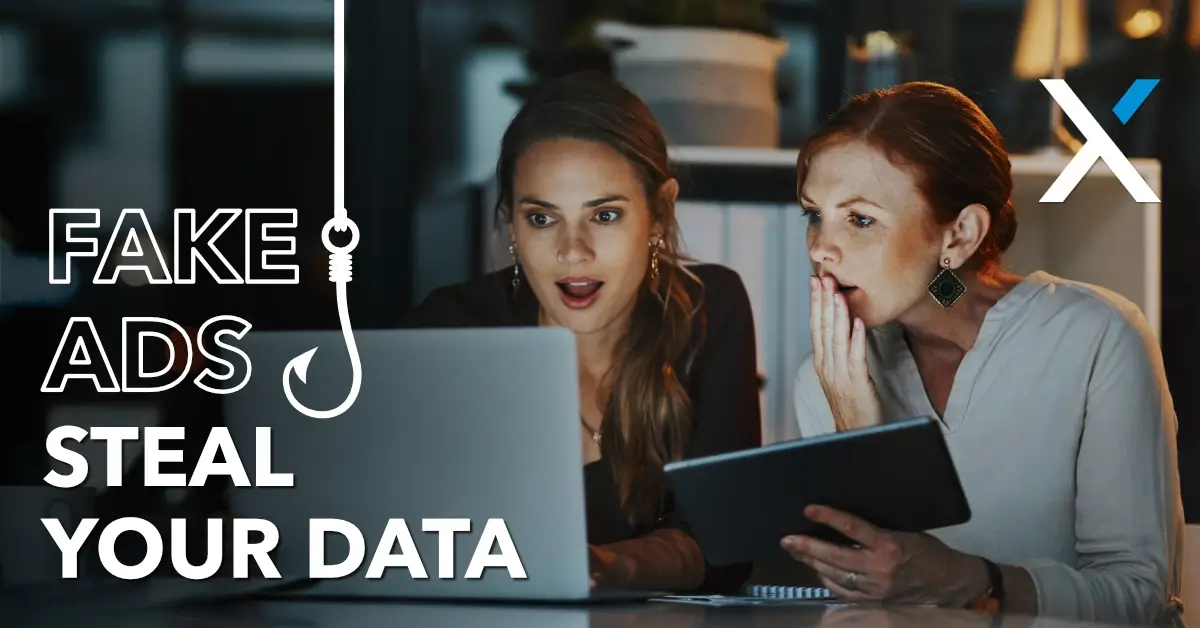One small business owner in the Midwest was searching online for a customer contract template. A simple Google search, a quick click on an ad that looked like a well-known document site…and just like that, malware was quietly downloaded onto their system. Within hours, their files were locked, and a ransom note appeared demanding payment in cryptocurrency.
No shady websites, no phishing emails. Just a single ad click.
What this business ran into is something more and more people are falling for: malvertising.
What Is Malvertising?
Malvertising, short for malicious advertising, is when cybercriminals hide harmful code in online ads. These ads might look completely normal and even appear on trusted sites or platforms. But once clicked (or sometimes just loaded), they can install malware, steal data, or redirect you to fake websites designed to collect sensitive information.
These aren’t pop-ups on sketchy websites. They’re showing up in Google search results, on news sites, and even in online marketplaces. That’s what makes them so effective and dangerous.
Why Businesses Are at Risk
Most SMBs don’t have a dedicated IT department or full-time cybersecurity support. You might be running things yourself or relying on a small team that’s juggling multiple roles. That makes you a prime target.
And the reality is, malvertising doesn’t look suspicious. If you’re searching for software, forms, tools, or industry resources, you’re naturally going to click ads that look like they’ll help. That’s exactly what attackers are counting on.
If malware gets into your system, it can lead to:
- Stolen customer data
- Locked or corrupted files
- Business downtime
- Costly recovery efforts
- Loss of trust from clients or partners
What Does a Malvertising Attack Look Like?
Here are a few common tactics hackers use:
Fake Software Ads
You see an ad for a common tool—like accounting software or document templates. It looks legitimate, but it installs malware instead of real software.
Drive-By Downloads
Just loading a webpage with a malicious ad can trigger a background download. No clicks necessary.
Redirects to Lookalike Sites
You click an ad and end up on what looks like a trusted site. But it’s a fake designed to trick you into logging in or downloading something harmful.
Hijacked Ad Networks
Hackers buy ad space through real ad platforms, submit clean content for approval, and later swap it with malicious versions once the ad is live.
6 Ways to Protect Your Business from Malvertising
You don’t need enterprise-grade tools to lower your risk. Here’s what you can do:
1.Use an Ad Blocker
This is an easy first line of defense. A reputable ad blocker can prevent many harmful ads from ever reaching your screen.
2. Train Your Team
Make sure employees know that even ads on trusted sites can be risky. Encourage them to go directly to a vendor’s website instead of clicking ads.
3. Keep Software Updated
Attackers often exploit outdated software. Regularly update your operating systems, browsers, and plugins to stay protected.
4. Limit Admin Access
Don’t give employees administrative control unless they really need it. Malware often relies on having those permissions to install itself.
5. Use Reliable Security Software
Choose a security suite that offers real-time protection, malware scanning, and website filtering.
6. Monitor Network Activity
Unusual spikes in traffic or strange outbound connections could signal malware. It’s worth working with an IT provider to set up basic monitoring tools.
The Bottom Line
Malvertising isn’t just an issue for big corporations—it’s hitting small and mid-sized businesses, often without warning. And since the ads look legitimate, they’re harder to spot than you’d expect.
But you can protect your business. With a few basic tools and some simple training, you can reduce your exposure and avoid falling into a trap that’s cost others dearly.
Need a next step?
Start by installing an ad blocker and reviewing how your team searches for tools or resources online. Small changes now can save you a big headache later.
